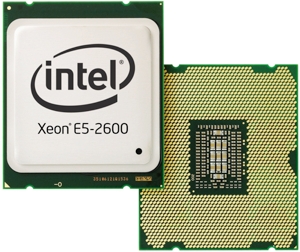 Earlier this month, Intel's Sandy Bridge architecture finally made its way to the company's dual- and quad-socket-capable server processors with the new Xeon E5 product family. The launch is very important for Intel's business, not only because of the growing server market - fueled by cloud computing initiatives and Internet-based companies - but also for its push to expand to storage and networking equipment.
Earlier this month, Intel's Sandy Bridge architecture finally made its way to the company's dual- and quad-socket-capable server processors with the new Xeon E5 product family. The launch is very important for Intel's business, not only because of the growing server market - fueled by cloud computing initiatives and Internet-based companies - but also for its push to expand to storage and networking equipment.
We had the opportunity to chat with Ajay Chandramouly, Cloud Computing and Data Center Industry Engagement Manager at Intel IT, who gave us some insight on how they have leveraged the Xeon processor family across their global data centers to drive performance and cost savings.
TS: First of all, thank you for taking the time to chat with us about Intel's latest server chip and its strategy for this market. Can you tell us a little bit about yourself and your job at Intel?
Sure, my name is Ajay Chandramouly, I've been with Intel now for 10 years. Currently I'm in Intel IT, actually -- serving as Intel IT's Cloud Computing and Data Center Industry Engagement Manager. So, I think, for this interview what I can do is provide some insights from an actual end-user IT perspective on how the new Xeon E5 2600 product family could actually benefit a real IT shop.
TS: Back in November we reviewed your consumer-level flagship CPU, the Sandy Bridge-E based Core i7-3960X. We understand the new Xeon E5-2600 is based on very similar technology. Please go ahead and give us your full pitch on what's new and what are the key features of the new outgoing Xeons.
The new Xeon E5 2600 product family is based on the Sandy Bridge architecture. It offers the best combination of performance, capabilities and cost effectiveness, which can really benefit the entire data center, not just in servers and workstations, but also in storage devices and network switches. Because the new Xeon brings benefits to compute, storage and networking we feel it will become the foundation for public and private clouds. To address the question about what's new, in summary the E5 2600 offers more of everything that affects performance. In other words, more cores, more cache, more memory, more integration with bandwidth across the entire platform to get your data where it needs to be faster than before.
Read: Xeon E5 2600 - Interview with Intel IT's Ajay Chandramouley
This article is brought to you in partnership with TechSpot














5 Comments - Add comment